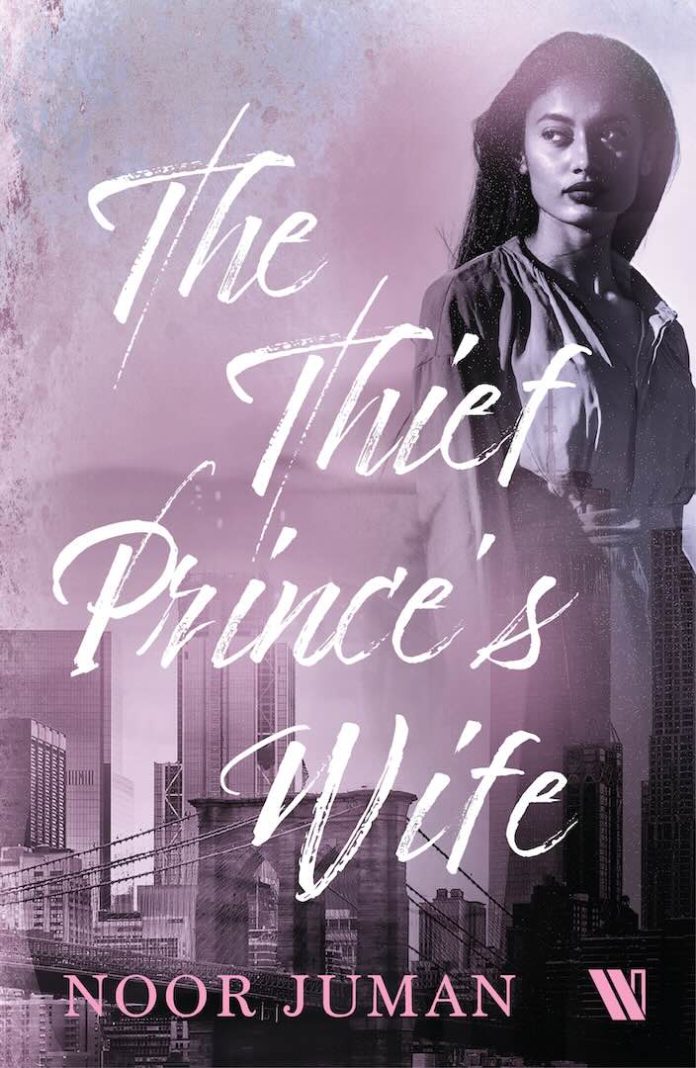In the crowded landscape of contemporary romance, Noor Juman’s The Thief Prince’s Wife emerges as a compelling testament to the author’s evolving prowess in crafting emotionally resonant narratives. This third offering from the writer builds magnificently upon the foundation established in her previous works, A Summer Lesson in Romance (2021) and An Autumn Guest Checks In (2024), delivering a story that transcends typical genre boundaries to explore themes of identity, redemption, and the transformative power of unconditional love.
Character Development and Authenticity
Payal Lohani: Breaking the Mold of Romance Heroines
Payal Lohani stands as one of the most refreshingly authentic protagonists in recent romance fiction. Juman has crafted a heroine who defies the typical damsel-in-distress archetype often found in mafia romance. Payal’s journey from a successful, independent woman to someone seeking protection through an arranged marriage speaks to contemporary anxieties about safety and autonomy in modern society.
What makes Payal particularly compelling is her pragmatic approach to survival. When faced with life-threatening circumstances, she chooses an unconventional path—marriage to a Ukrainian mafia prince—not out of romantic delusion but calculated necessity. Her decision to tip off the FBI about the Povnokrovnyy Club demonstrates her moral courage, while her subsequent vulnerability showcases the realistic consequences of standing up to powerful criminal organizations.
The authenticity of her cultural background adds depth to the narrative. Juman skillfully weaves Indian-American identity into the story without reducing it to stereotypes, particularly evident in the wedding dress fitting scene with her disapproving mother and the complex family dynamics that reflect real generational tensions within immigrant families.
Oleksiy Karmazin: The Reluctant Prince’s Redemption Arc
Oleksiy represents a fascinating subversion of the typical alpha male protagonist common in mafia romance. Rather than embracing his birthright as the son of a Ukrainian vor zakone, he has spent his adult life deliberately distancing himself from the criminal underworld. His legitimate businesses—Channel Fitness and his security firm—serve as both personal redemption and community service, offering former criminals alternative paths to prosperity.
The author’s handling of Oleksiy’s amnesia storyline is particularly noteworthy. Rather than using memory loss as a convenient plot device, Juman explores the psychological implications of forgetting one’s painful experiences while retaining emotional connections. The scenes where Oleksiy struggles to differentiate between real memories and fabricated ones provide genuine emotional weight to his character development.
His relationship with his childhood friend-turned-enemy Ruslan adds layers of complexity to his backstory, illustrating how choices made in youth can reverberate across decades. The revelation that Ruslan ultimately saves him despite their complicated history speaks to themes of redemption and the persistence of genuine friendship beneath surface antagonism.
Narrative Structure and Pacing
A Sophisticated Approach to Dual Perspectives
Juman employs a dual point-of-view structure that allows readers intimate access to both protagonists’ internal struggles. This technique proves particularly effective in the post-amnesia sections, where the contrast between Payal’s complete emotional investment and Oleksiy’s confused but instinctive attraction creates compelling dramatic tension.
The pacing demonstrates remarkable control, with the author knowing precisely when to accelerate action and when to allow for character introspection. The initial meeting at the bar establishes their dynamic efficiently, while the middle section exploring their growing intimacy avoids the rushed romance that often plagues the genre. The climactic confrontation with Gavrill Kogan and its aftermath provide genuine stakes that extend beyond romantic complications.
Cultural Integration and Authenticity
One of the novel’s greatest strengths lies in Juman’s seamless integration of multiple cultural elements. The Ukrainian mafia hierarchy is presented with enough detail to feel authentic without overwhelming readers with exposition. Similarly, the Indian-American family dynamics ring true, particularly in the portrayal of generational conflicts regarding arranged marriage and family honor.
The Thanksgiving dinner scene serves as a masterful example of how diverse backgrounds can create new traditions, symbolizing the broader theme of finding family among unlikely circumstances. These cultural elements never feel tokenistic but instead serve the story’s deeper themes about identity and belonging.
Thematic Depth and Social Commentary
Power, Agency, and Survival
Beneath its romantic surface, The Thief Prince’s Wife offers sophisticated commentary on power dynamics and personal agency. Payal’s choice to enter an arranged marriage represents a complex negotiation between traditional expectations and modern necessities. Her decision reflects the reality that sometimes survival requires compromising idealistic notions of independence.
The exploration of criminal rehabilitation through Oleksiy’s work with former gang members like Mykola and his programs for at-risk youth adds social relevance to the narrative. Juman avoids glorifying criminal lifestyle while acknowledging the systemic factors that drive people toward illegal activities.
Identity and Transformation
Both protagonists grapple with questions of identity throughout the narrative. Payal must reconcile her former independence with her new role as a mafia wife, while Oleksiy struggles to balance his legitimate aspirations with his inescapable criminal heritage. The amnesia subplot serves as a metaphor for the possibility of reinvention while questioning whether people can truly escape their past.
Writing Style and Technical Craft
Dialogue and Voice
Juman’s dialogue sparkles with authenticity and wit. The banter between Payal and Oleksiy feels natural and unforced, revealing character while advancing plot. Particularly impressive is the author’s ability to capture distinct voices for characters from different cultural backgrounds without resorting to stereotypical speech patterns.
The internal monologues provide insight into character motivations without becoming overly introspective. Payal’s practical assessments of her situation balance with Oleksiy’s emotional turmoil effectively, creating a well-rounded perspective on their unusual circumstances.
Sensual Writing and Emotional Intimacy
The romantic and intimate scenes demonstrate Juman’s maturation as a writer. The physical chemistry between the protagonists develops organically from their emotional connection, with intimate moments serving character development rather than mere titillation. The author handles both tender moments and passionate encounters with equal skill, creating scenes that feel authentic rather than performative.
Comparative Analysis Within the Genre
Elevating Mafia Romance Conventions
While The Thief Prince’s Wife operates within established mafia romance conventions, it elevates the genre through thoughtful character development and realistic consequences. Unlike many contemporaries that glamorize criminal lifestyle, Juman’s approach acknowledges the genuine dangers and moral complexities inherent in this world.
The arranged marriage trope receives fresh treatment through the protagonists’ pragmatic approach to their situation. Rather than fighting against their circumstances, both characters work within them while developing genuine affection, creating a more mature dynamic than typically found in the genre.
Cultural Diversity in Romance
The book joins a growing movement toward more diverse representation in romance fiction. Juman’s portrayal of an Indian-American heroine feels authentic and respectful, avoiding both the exoticization and the cultural erasure that sometimes plague diverse romance narratives.
Masterful Plot Integration and Supporting Characters
The FBI investigation subplot provides essential context for Payal’s circumstances, creating realistic stakes that ground the romance in genuine consequences. This element demonstrates Juman’s commitment to showing how personal choices intersect with larger social and legal systems.
The supporting characters, from Payal’s family members to the vibrant community around Channel Fitness, create a rich tapestry that enhances the central romance. Each character serves a purpose in illustrating the protagonists’ growth and the various worlds they navigate.
The resolution delivers deeply satisfying emotional payoffs, with the climactic confrontation leading seamlessly into the protagonists’ renewed commitment to each other. The pacing allows readers to fully appreciate the transformation both characters have undergone throughout their journey.
Conclusion and Recommendation
The Thief Prince’s Wife represents a significant achievement in contemporary romance fiction, demonstrating how genre conventions can be elevated through careful character development, cultural authenticity, and thematic depth. Noor Juman has crafted a story that satisfies on multiple levels—as a compelling romance, an exploration of cultural identity, and a meditation on redemption and second chances.
The novel will particularly appeal to readers seeking romance with substance, those interested in diverse cultural perspectives, and fans of well-developed characters facing realistic obstacles. While operating within familiar genre parameters, the book offers enough originality and emotional authenticity to stand out in a crowded field.
This latest offering confirms Juman’s evolution as a writer and suggests even greater works to come. The Thief Prince’s Wife establishes her as a significant voice in contemporary romance, capable of delivering both emotional satisfaction and literary merit.
Similar Reading Recommendations
Readers who appreciate The Thief Prince’s Wife might enjoy:
- “The Hating Game” by Sally Thorne – For witty dialogue and enemies-to-lovers dynamics
- “The Kiss Quotient” by Helen Hoang – For diverse representation and authentic character development
- “Flirting Lessons” by Jasmine Guillory – For contemporary romance with cultural depth
- “Beach Read” by Emily Henry – For emotional complexity beneath romantic comedy surface
- “The Proposal” by Jasmine Guillory – For interracial romance with family dynamics
- “Red, White & Royal Blue” by Casey McQuiston – For political intrigue blended with romance
- “The Seven Husbands of Evelyn Hugo” by Taylor Jenkins Reid – For complex female protagonists and family secrets
Rating Recommendation: This novel earns high marks for character development, cultural authenticity, and emotional depth, making it essential reading for romance enthusiasts seeking substance alongside entertainment.





